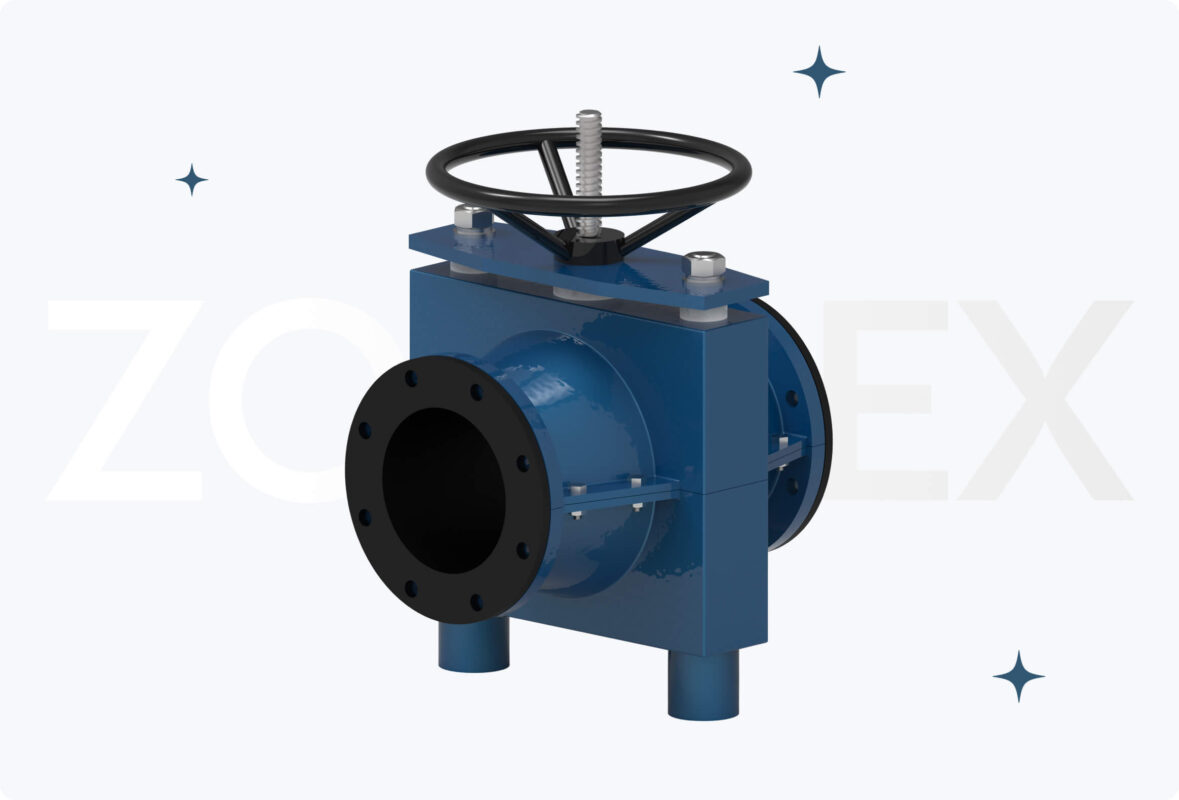What is a pinch valve?
A pinch valve is a specialized type of shut-off valve used to stop the flow of liquids or gases in pipeline systems. Unlike traditional valve designs, the pinch valve has no metallic components in the flow path. Its main working element is a flexible sleeve (also called a liner or hose) made of rubber, silicone, or another resilient material, which serves as the sealing surface.
This type of valve is particularly well-suited for applications involving challenging media, such as contaminated, abrasive, or viscous fluids, as well as those containing solid particles.
How does a pinch valve work?
The operating principle of a pinch valve is based on the mechanical compression of a flexible sleeve, which results in the complete closure of the flow path. The compression is activated by a stem connected to an actuator, which can be:
Manual (handwheel)
Pneumatic
Electric
When the valve opens, the sleeve returns to its original shape, allowing the medium to flow freely. This mechanism enables pinch valves to operate quietly, quickly, and efficiently—even when handling demanding or aggressive substances.
Advantages of using pinch valves
Pinch valves offer several key advantages that make them ideal for demanding industrial applications:
Full bore design – minimal flow resistance and no clogging
Only the sleeve contacts the medium – excellent chemical and abrasion resistance
Suitable for abrasive, fibrous, and viscous fluids
Silent and shock-free operation
No dead zones – hygienic and easy to clean
Low maintenance – no internal mechanical parts in contact with the medium
Quick and reliable shut-off – even with fluids containing solids
Wide range of sleeve materials – adaptable to various chemicals and process conditions
Summary
Pinch valves provide a modern, flexible solution for applications requiring reliable shut-off of challenging media. Their simple yet ingenious design, resistance to wear, and low operating costs make them an ideal choice for demanding industrial systems.
Zondex pinch valves guarantee quality, durability, and trouble-free operation—even in the most difficult conditions.
Models and production range of Zondex pinch valves
Zondex Engineering offers a broad range of pinch valve models, including the following models:
201M, 202M, 203M, 204M, 205M, 206M, 201P, 202P, 203P, 204P.
Available nominal diameters: DN 50 to DN 1200
Working pressure range: PN 10 (1.0 MPa) to PN 16 (1.6 MPa)
Valve bodies can be manufactured in various materials depending on the application:
🔹 Ductile iron
– EN-GJS-400-15 / GGG40
🔹 Carbon steels
– ASTM A216 WCB, A105, Q235 / P235, A216 WCC
🔹 Low alloy steels
– ASTM A352 LCC, LCB, LCI, LC2
– ASTM A217 WC6, WC9
– ASTM A182 F11
– ASTM A350 LF1 / LF2 / LF3
🔹 Stainless steels (corrosion-resistant)
– A351 CF8 / AISI 304 / A182 F304
– A351 CF8M / AISI 316 / A182 F316
– A351 CF3 / AISI 304L / A182 F304L
– A351 CF3M / AISI 316L
– AISI 904L, AISI 316Ti, AISI 321, AISI 310S
🔹 Special steels (duplex)
– Duplex 2205
– Duplex 2507





